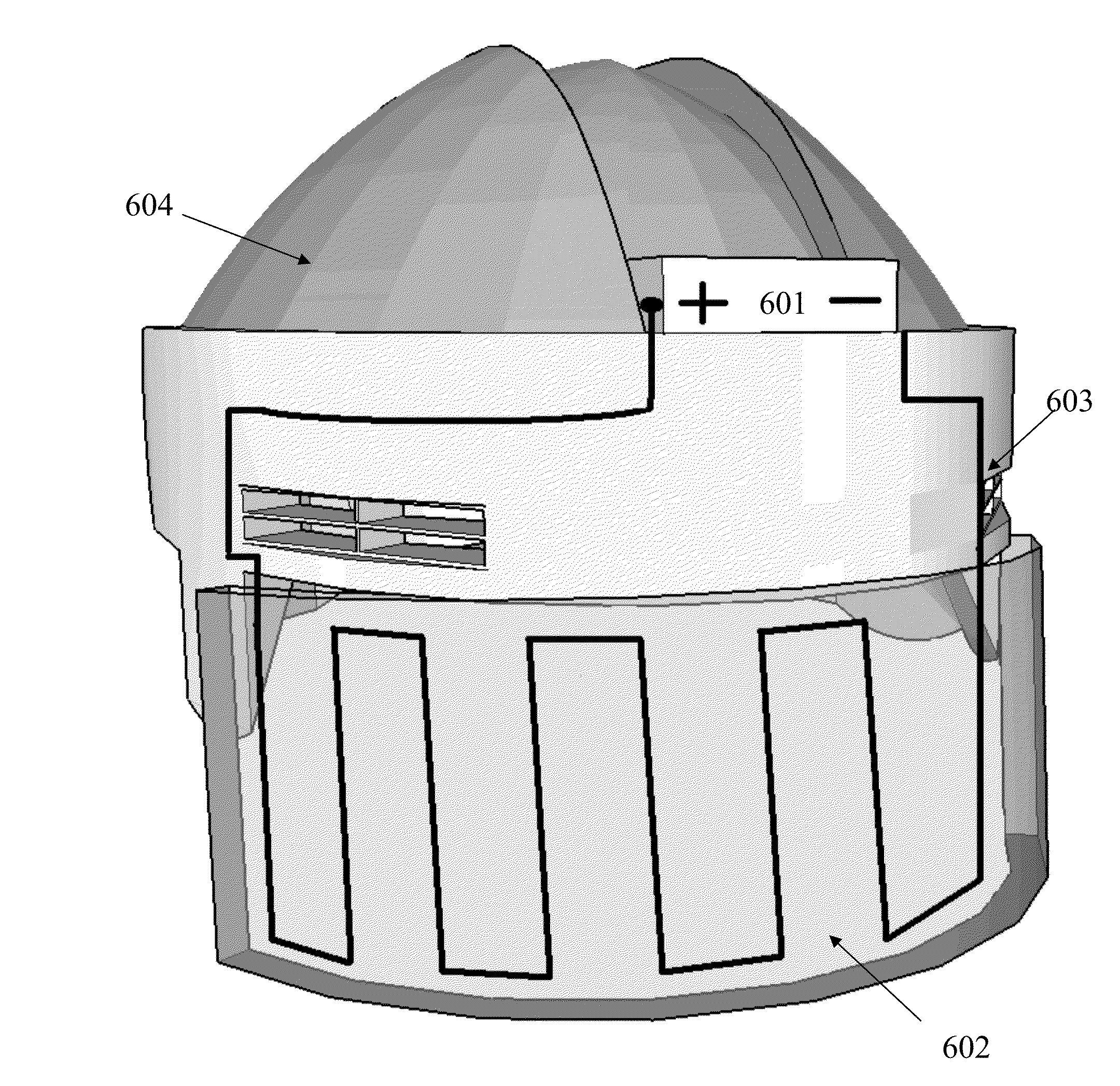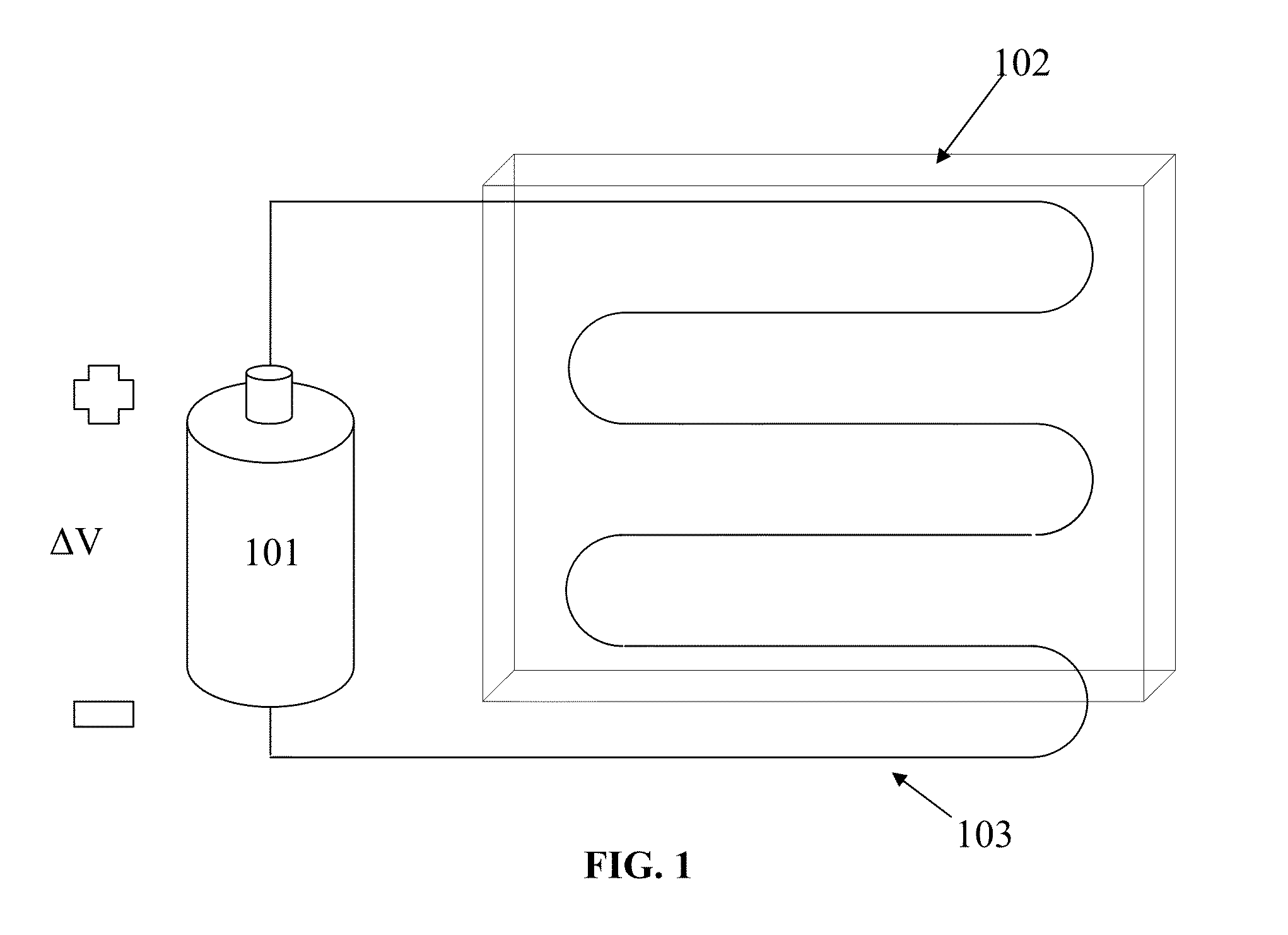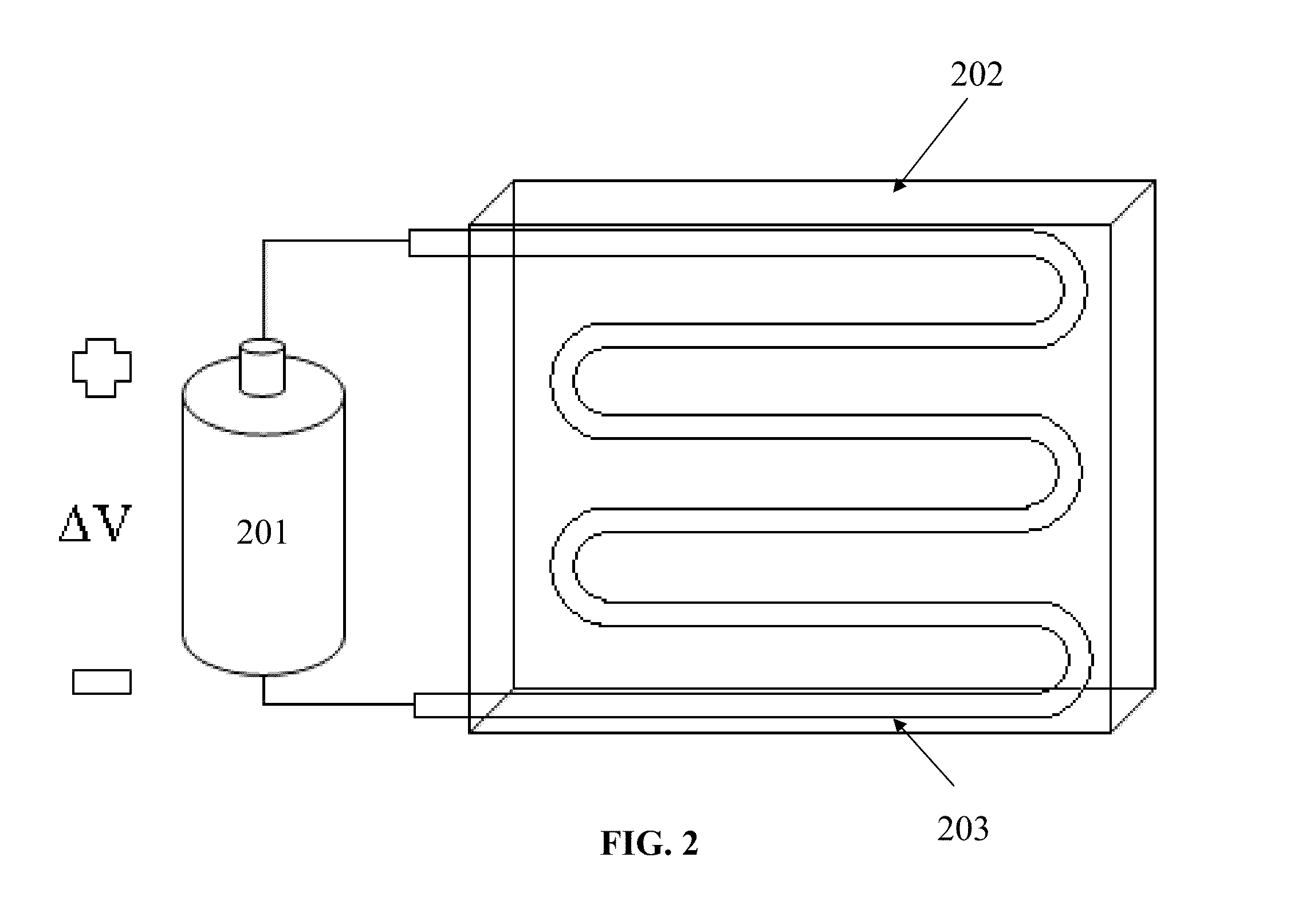Device for active heating of transparent materials
a technology of active heating and transparent materials, applied in the direction of ohmic resistance heating, ohmic resistance heating details, electrical appliances, etc., can solve the problems of affecting the appearance of objects, blurry and distorted objects, and bluffing, and is potentially dangerous to the viewer
- Summary
- Abstract
- Description
- Claims
- Application Information
AI Technical Summary
Benefits of technology
Problems solved by technology
Method used
Image
Examples
Embodiment Construction
[0018]Embodiments of the present invention relate to devices for evaporating condensate from a surface of transparent base material. In one embodiment, a thermo-resistive element for heating the surface is made more scratch-resistant by embedding the thermo-resistive element directly into the transparent base. In another embodiment, a thermo-resistive element may be configured in such a way as to reduce the amount of electricity required to heat the element thereby reducing the size of any required external power source. In another embodiment, a thermo-resistive element may be configured in such a way as to selectively heat particular areas of the eyewear surface that are susceptible to condensation accumulation, namely near a wearer's nose and mouth.
[0019]Embodiments of the present invention relate to a device for heating a surface of a transparent base used in eyewear thereby preventing the accumulation of condensing fluids, generally water. The device comprises a transparent base...
PUM
 Login to View More
Login to View More Abstract
Description
Claims
Application Information
 Login to View More
Login to View More - R&D
- Intellectual Property
- Life Sciences
- Materials
- Tech Scout
- Unparalleled Data Quality
- Higher Quality Content
- 60% Fewer Hallucinations
Browse by: Latest US Patents, China's latest patents, Technical Efficacy Thesaurus, Application Domain, Technology Topic, Popular Technical Reports.
© 2025 PatSnap. All rights reserved.Legal|Privacy policy|Modern Slavery Act Transparency Statement|Sitemap|About US| Contact US: help@patsnap.com



